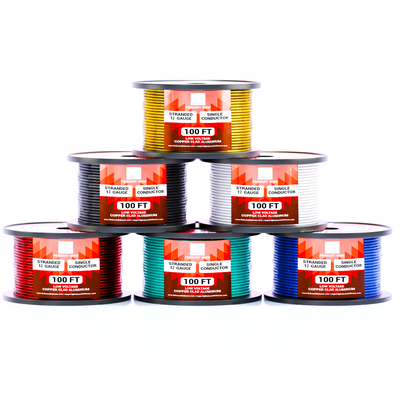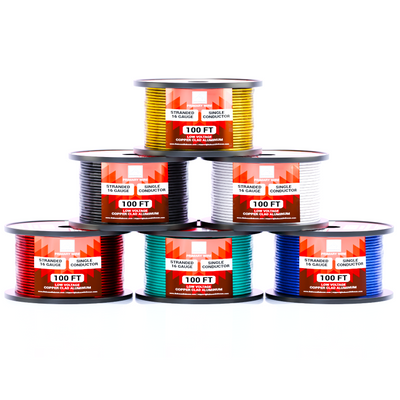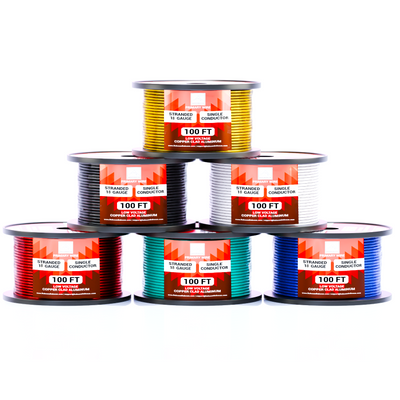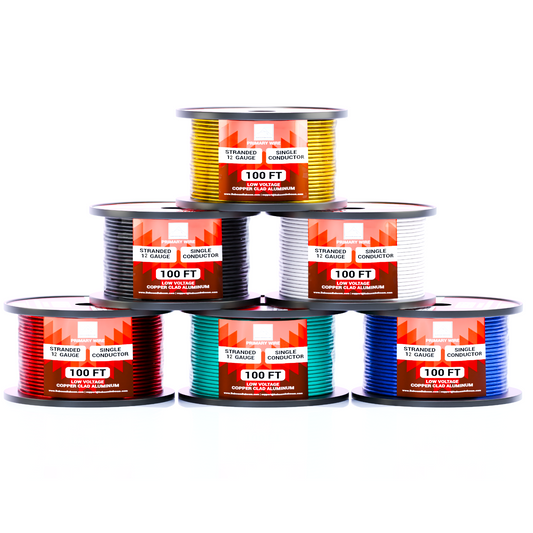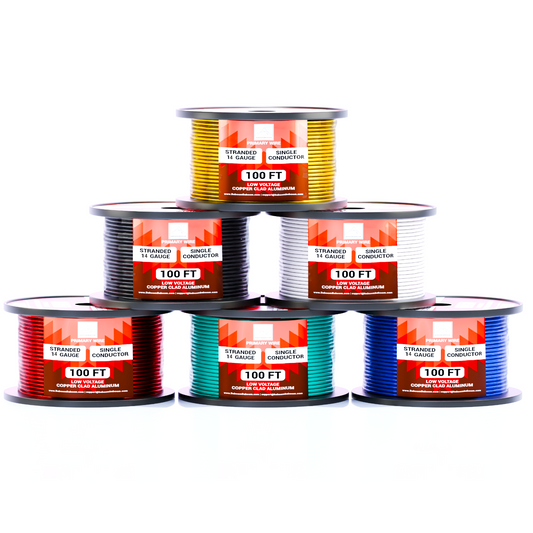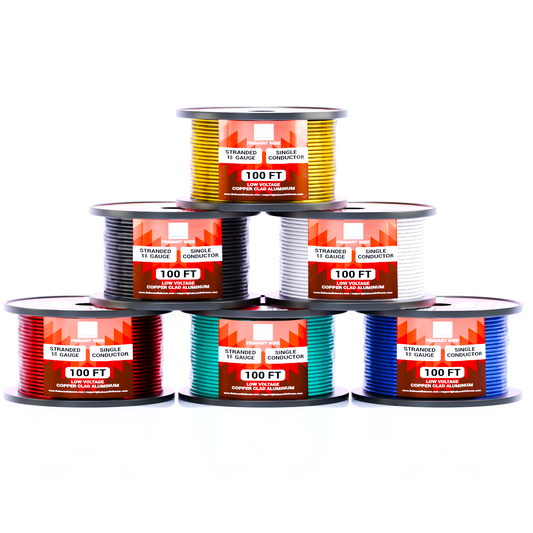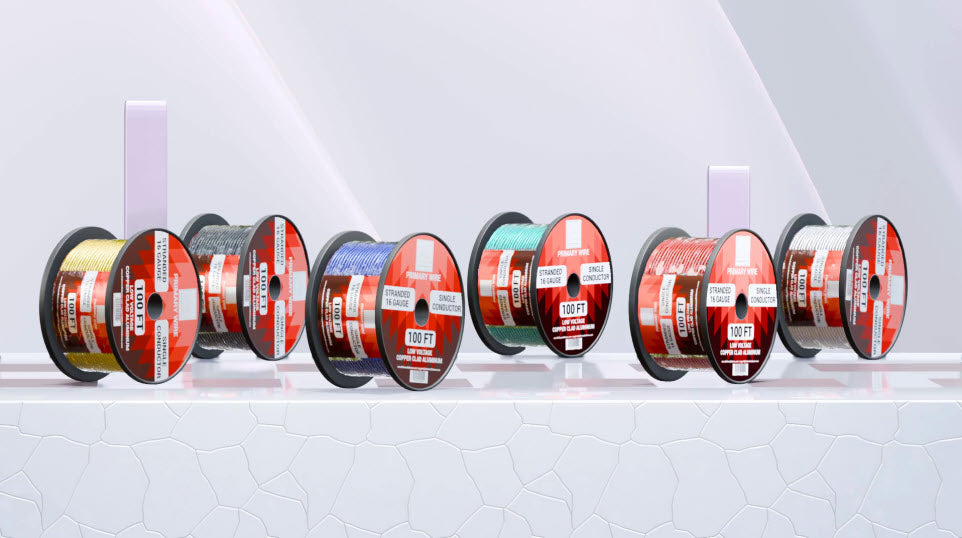
Boost Your Car Audio System: Benefits of CCA Copper Clad Aluminum Wire
Share
Introduction
Are you ready to transform your car audio experience? Discover how Copper Clad Aluminum (CCA) wires can enhance your stereo system’s performance with better conductivity, reduced weight, and cost-effectiveness. Let’s dive into the world of CCA wires and unlock the full potential of your car audio system.

Understanding CCA Wire Technology
CCA wire technology combines the conductivity of copper with the lightweight nature of aluminum. This innovative solution delivers impressive electrical performance at a fraction of the cost of pure copper. CCA wires not only enhance sound clarity but also reduce overall weight, which is particularly beneficial in automotive applications. Plus, they are more flexible and easier to install, making them perfect for intricate stereo setups.
Composition and Structure of CCA Wire
Copper Clad Aluminum (CCA) wire is crafted by layering a thin coating of copper over an aluminum core. This construction ensures excellent electrical conductivity from the outer copper layer while benefiting from the aluminum's lighter weight. This dual-metal structure enhances sound quality and makes handling and installation more manageable, resulting in a durable, cost-effective solution for high-performance automotive audio systems.

Differences Between CCA and Pure Copper Wires
Cost-Effectiveness
CCA wires are a budget-friendly alternative to pure copper wires, ideal for projects with financial constraints. While pure copper wires boast superior conductivity and lower resistance, enhancing overall performance and reliability, CCA wires are significantly lighter. This reduced weight is particularly beneficial in applications where every ounce counts.
Durability
Pure copper wires have the upper hand in durability, being less susceptible to oxidation and corrosion, contributing to a longer lifespan. Both types of wires have distinct benefits, catering to different needs and priorities.
Advantages of Using CCA in Car Audio Systems
Affordability
CCA cables are more affordable than pure copper counterparts, making them a cost-effective solution for budget-conscious enthusiasts.
Reduced Weight
The aluminum core in CCA cables significantly reduces the overall weight of the audio system, crucial for performance-oriented setups.
Reliable Performance
While maintaining sufficient conductivity for most car audio applications, CCA cables ensure reliable performance without compromising on quality. Their flexibility allows for easier installation and routing in the vehicle's tight spaces, simplifying the setup process.
Cost-Effectiveness Without Compromising Quality
Exploring different brands and models through thorough research can help you identify the best value for your budget. Opting for refurbished or gently used equipment is another smart way to save money while still achieving excellent performance. Keeping an eye out for sales, discounts, and bundle deals can enable you to acquire high-quality components at a more affordable price. If you possess the necessary skills and tools, undertaking a DIY installation can further reduce labor costs, allowing you to maximize your investment in your car audio system.
Enhanced Flexibility and Ease of Installation
Modern car audio systems incorporate plug-and-play features, streamlining the installation process significantly. Enhanced wiring harnesses and adapter kits enable easy integration with a vehicle's existing electrical system, ensuring a hassle-free setup. User-friendly manuals and online tutorials provide step-by-step guidance, catering to both novice and experienced installers. Additionally, innovative mounting solutions and customizable components offer greater flexibility, allowing stereos to fit seamlessly into a variety of vehicle models. This combination of advanced technology and practical design makes upgrading your car's audio system more accessible than ever.

Performance Metrics for Optimal Sound Quality
When aiming for optimal sound quality in your car audio system, considering the total harmonic distortion (THD) is essential to ensure minimal sound distortion. Evaluating the signal-to-noise ratio (SNR) can significantly impact the clarity and crispness of your car audio system output, making a noticeable difference in the overall listening experience. Additionally, checking the frequency response range will ensure your stereo can handle a variety of sound pitches, from deep bass to high treble, providing a well-rounded audio performance. Paying attention to the power output per channel is also crucial, as it guarantees adequate volume and sound clarity, ensuring your music can be enjoyed at its fullest potential.
Electrical Conductivity and Resistance Considerations
Electrical conductivity determines how efficiently current flows through the wires and components in a car audio system. High resistance in the wires can lead to power loss and degraded sound quality in the stereo output. To ensure minimal resistance and optimal performance, choosing the right gauge of wire is crucial. Proper insulation and connections also play a significant role in maintaining conductivity, helping to prevent short circuits or interference in the audio signals. By focusing on these elements, you can enhance the overall sound quality and reliability of your car's audio system.
Impact on Signal Integrity and Noise Reduction
Proper grounding techniques are essential for maintaining signal integrity and reducing noise in automotive stereo installations. Employing shielded cables can significantly minimize electromagnetic interference, thus enhancing sound quality. Additionally, ensuring a clean power supply by incorporating noise filters helps prevent alternator whine and other electrical disturbances. Careful routing of wires away from high-power components further bolsters signal integrity and mitigates potential noise issues. By focusing on these key aspects, you can optimize your car audio system for a superior listening experience.
Practical Tips for Installing CCA Wires
Accurately measuring the length of Copper Clad Aluminum wires is crucial to avoid shortages or excess during installation, ensuring a smooth and efficient process. Utilizing proper wire stripping tools is essential for cleanly removing insulation without damaging the conductors, which maintains the integrity of the wires. Employing high-quality connectors and terminals can significantly enhance the reliability of connections and minimize signal loss, thereby optimizing performance. Finally, double-checking all connections for tightness and securing insulation helps prevent potential electrical hazards, ensuring a safe and robust car audio system setup.
Choosing the Right Gauge for Your Car Audio System
Determining the appropriate gauge for your automotive stereo wiring begins with considering the power requirements of your amplifier. For longer wire runs, thicker wires (with lower gauge numbers) are essential to minimize voltage drop and maintain optimal performance. Ensuring the wire gauge can handle the total current draw of your car audio system's components is crucial to prevent overheating and potential damage. Consulting the manufacturer's recommendations and referencing a wire gauge chart will help you make an informed decision, ensuring both safety and efficiency in your car audio setup.
The 3 typical gauges for car audio installation are:
Proper Connection Techniques to Avoid Signal Loss
Making sure all wire connections are secure and properly insulated is crucial to prevent any signal interference in your automotive stereo system. Opting for high-quality cables and connectors specifically designed for audio systems helps maintain signal integrity, ensuring clear and crisp sound. To minimize electromagnetic interference, avoid running audio wires parallel to power cables whenever possible. Additionally, utilizing proper grounding techniques and verifying that grounding points are clean and free of paint or rust can significantly enhance the overall performance and reliability of your car audio system setup.
Maintaining Your Automotive Stereo System
Keeping your automotive stereo system in top condition requires regular maintenance. Frequently cleaning the system helps prevent dust buildup, which can negatively impact sound quality and functionality. Additionally, inspecting and replacing any worn-out or frayed wiring ensures a consistent power supply and minimizes potential hazards. Updating the car audio system's software or firmware allows you to take advantage of the latest features and improvements, enhancing overall performance. Lastly, regularly inspecting and cleaning the speakers is essential to maintain clear sound output, preventing any blockages or damage that could degrade the listening experience.
Routine Checks for Wire Integrity
Regular inspections of all wiring connections are essential to identify any signs of corrosion or damage that could affect your automotive stereo system. Ensuring that all wires are securely fastened and free from being loose or frayed helps maintain optimal performance and safety. Monitoring for any unusual sounds or malfunctions can quickly alert you to potential wiring issues that need immediate attention. Utilizing a multimeter to test for consistent voltage and continuity in the wiring provides a reliable way to verify the integrity of your system, ensuring a seamless audio experience.

